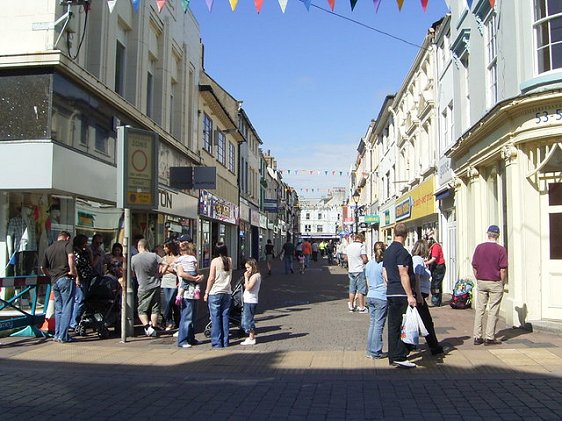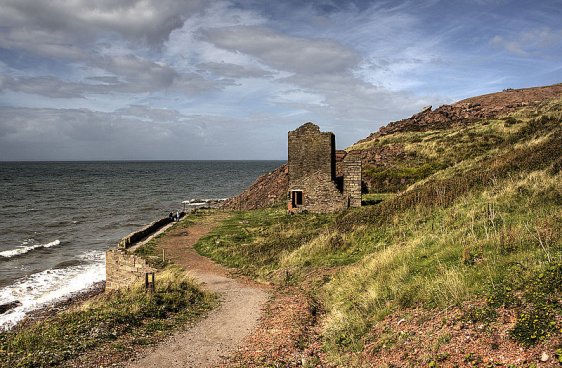 Whitehaven, Cumbria, England: Source: https://commons.wikimedia.org/wiki/File:King_Street_-_geograph.org.uk_-_470948.jpg
Whitehaven, Cumbria, England: Source: https://commons.wikimedia.org/wiki/File:King_Street_-_geograph.org.uk_-_470948.jpgAuthor: Stanley Walker

Whitehaven is a small coastal town in Cumbria, England. Located on the west coast, away from the Lake District National Park, Whitehaven has a population of around 25,000 people. It is near the Seallafield nuclear complex which employs many of the people living in Whitehaven.
There is no evidence of Roman presence in Whitehaven, although the Romans did built a fort in nearby Parton, just less than 2 km away. The town may have been established by Vikings in the 10th century. The village was owned by the Priory of St Bees until the Dissolution of the Monasteries by King Henry VIII in 1539.
The Whitehaven site was purchased by Sir Christopher Lowther in 1630. The Lowther family was instrumental in the founding and development of present-day Whitehaven. They used it as a seaport for the export of coal from the Cumberland Coalfield.
Today Whitehaven has one of the best preserved townscape of Georgian architecture in Europe, a fact that it is heavily promoting for tourism purposes. The harbour area underwent a rejuvenation program that has added life to the area.
 Saltom Pit, Whitehaven, with Fairy Rock in the background: Source: https://commons.wikimedia.org/wiki/File:Fairy_rock.jpg
Saltom Pit, Whitehaven, with Fairy Rock in the background: Source: https://commons.wikimedia.org/wiki/File:Fairy_rock.jpgAuthor: Alan Cleaver

Visiting Whitehaven
If you're coming from Carlisle, take the A595 road to reach Whitehaven. Otherwise, take the M6 motorway till Penrith. From Exit 40, continue on the A66 road until it joins the A595 road. Continue on the A595 road until Whitehaven. Latest updates on Penang Travel Tips
Latest updates on Penang Travel Tips

Copyright © 2003-2025 Timothy Tye. All Rights Reserved.

 Go Back
Go Back